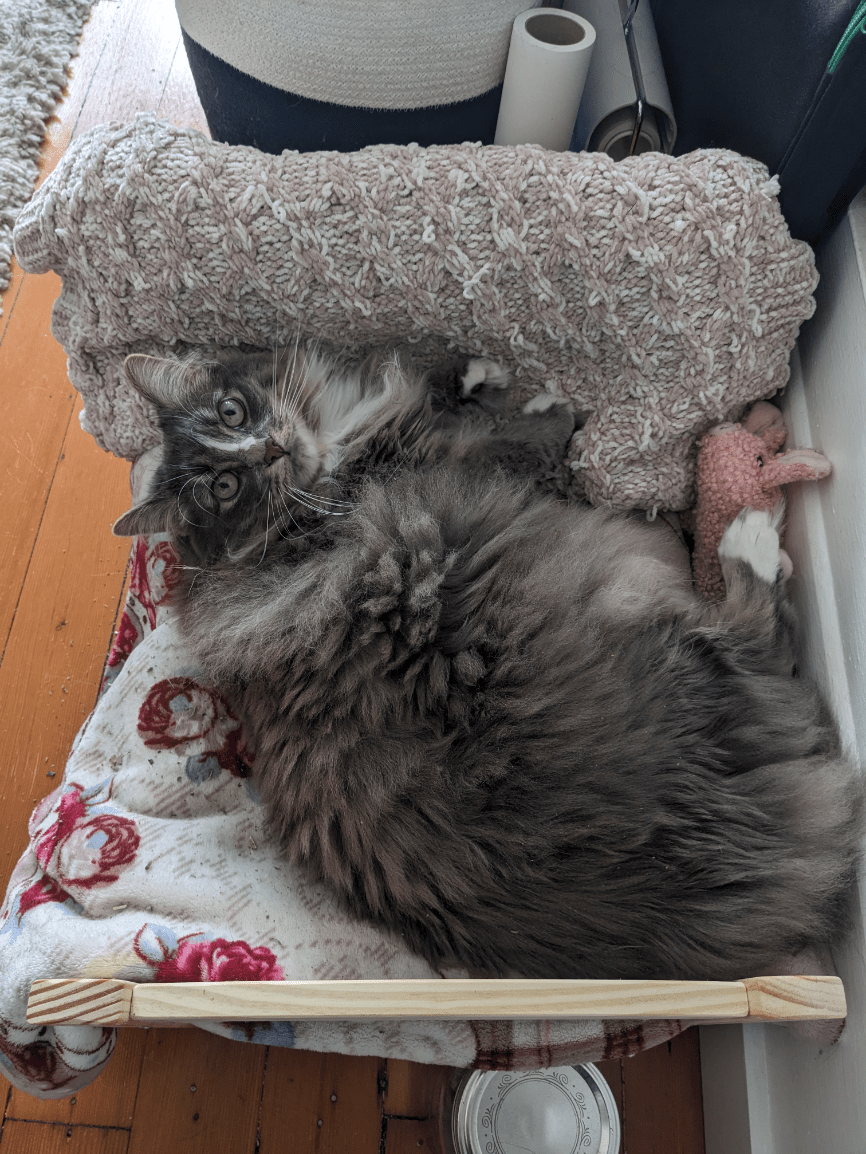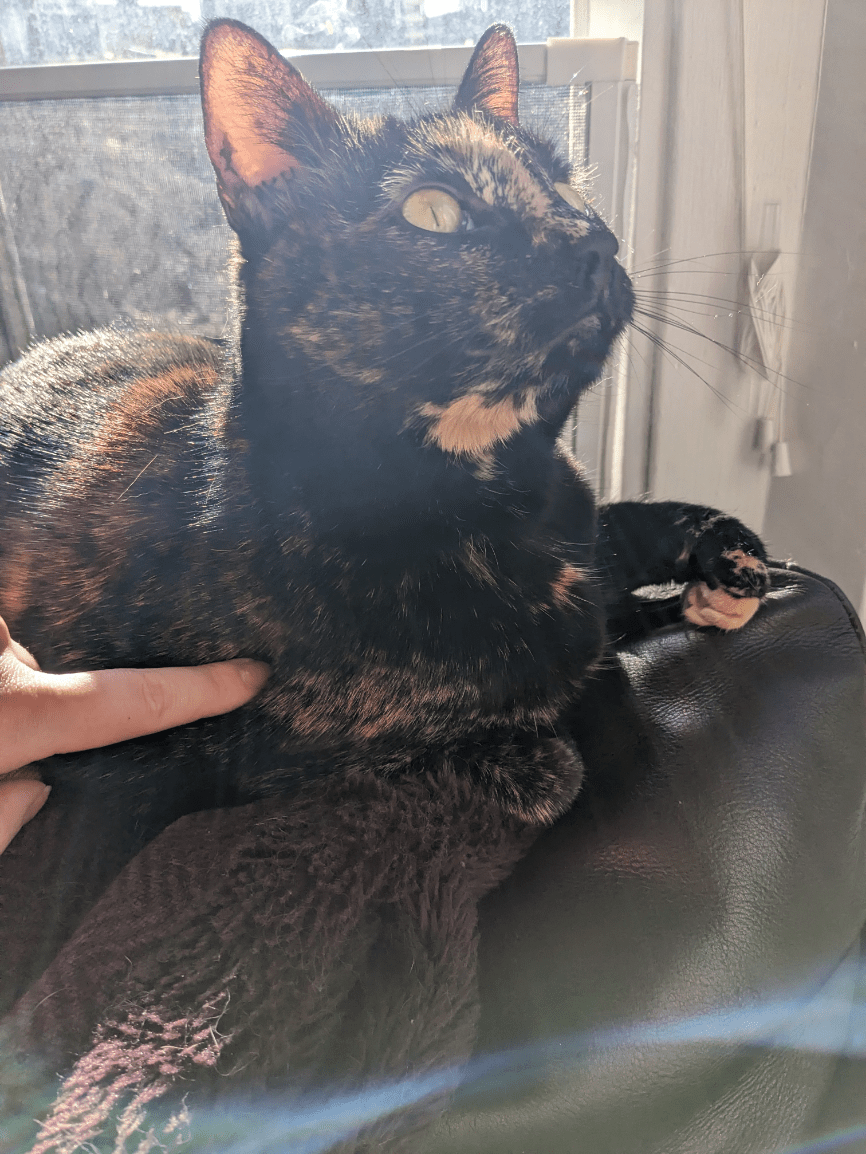These are the phases of mitosis. List them in order.
What are prophase, metaphase, anaphase, and telophase?
This specific part of the enzyme is where substrates will bind.
What is the active site?
This is the process by which mRNA transcripts are read by ribosomes to produce polypeptides
What is translation?
This category of organisms is able to produce their own food, most frequently by harvesting light energy.
What are autotrophs?
This is the process by which that traits increase the likelihood of an individual to survive and reproduce are selected for by the environment, and gradually become more frequent in a population.
What is natural selection?
This fatty material wraps around an axon to allow saltatory conduction
What is myelin/myelin sheath?
Besides English, Ms. Glanville can speak a little of this language.
What is Japanese?
A cell that contains chloroplasts, a plasma membrane and 80S ribosomes.
What is a plant cell?
This type of metabolic reaction describes the synthesis of larger macromolecules from smaller monomers.
What is anabolism/anabolic reactions?
This part of a tRNA molecule allows for complementary base pairing with mRNA in the ribosome to ensure the correct amino acid is being dropped off.
What is an anticodon?
This term describes the specific role an organism inhabits in an ecosystem
What is an ecological niche?
List the hierarchy of taxa from biggest to smallest.
What are domain, kingdom, phylum, class, order, family, genus, species?
This valve closes to prevent blood from being forced back into the left atrium from the left ventricle during ventricular contraction
What is the left atrioventricular valve?
This cat is Ms. Glanville's beloved fur baby
Who is Nutmeg?
This cell has a nucleoid, cell wall, pilli, and 70S ribosomes.
What is a prokaryotic cell?
This enzyme unzips the hydrogen bonds between the two DNA strands during DNA replication.
What is helicase?
This technique is used to amplify small amounts of DNA to be used for things like gel electrophoresis
What is PCR (polymerase chain reaction)?
This material is formed from partially decomposed organic matter in acidic, waterlogged conditions.
This process is the only way variation is introduced into asexually reproducing organisms.
What is mutation?
This alveolar cell produces surfactant to keep the inner surface of the alveoli moist and prevent collapse.
What is a type II pneumocyte?
This was Ms. Glanville's favourite extra-curricular in school
What is musical theatre?
This cell is an exception to cell theory because it is multinucleated and much longer than a typical human somatic cell.
What is a striated muscle fibre/skeletal muscle fibre?
This type of reaction occurs when a dipeptide is formed from two amino acids, and a water is removed in the process
What is a condensation reaction?
This term describes the identical halves of a replicated chromosome, held together by the centromere
What are sister chromatids?
This process is the primary way carbon is removed from carbon sinks in the atmosphere.
What is photosynthesis?
This structure is commonly used as an example of a homologous structure in vertebrates
What is the pentadactyl limb?
This is the process by which one B-cell is "selected" by a specific antigen, and results in the production of many more B-cells which differentiate into plasma cells and memory cells
What is clonal selection?
Before becoming a teacher, Ms. Glanville worked at this charitable organisation
What is the BCSPCA?
These four kinds of stem cells differ in their ability to differentiate into different kinds of tissues. List them from most to least able to differentiate.
What are totipotent/omnipotent, pluripotent, multipotent, and unipotent stem cells?
This property of water allows aquatic habitats to absorb a large amount of heat before increasing in temperature by 1 degree Celsius, and allows aquatic habitats to remain fairly stable in temperature
What is (high) specific heat capacity?
This part of meiosis is also known as the reduction division
What is meiosis I?
A photosynthetic algae is eaten by a shrimp, which is eaten by a salmon. Name the salmon's position in this food chain.
What is a secondary consumer?
This kind of speciation can occur between organisms living in the same geographic area but may be reproductively isolated by differing behaviours
What is sympatric speciation?
This protein in the blood plasma is the inactive form of the protein which activates fibrinogen into fibrin during blood clot formation.
What is prothrombin?
This is Ms. Glanville's beloved OTHER CAT 
Who is Stinky or Sputnik?